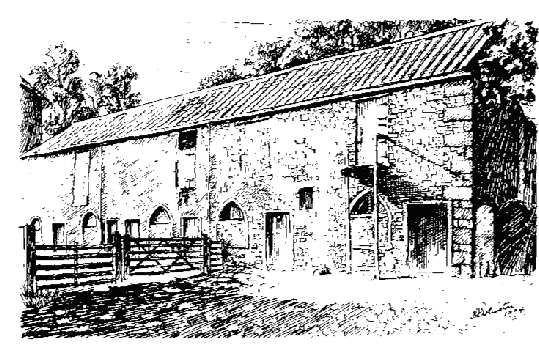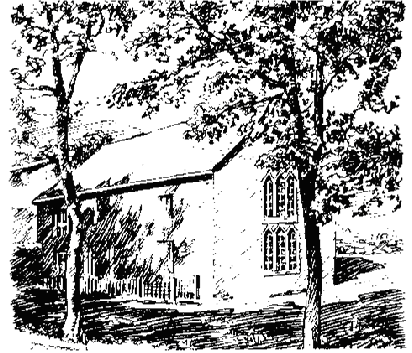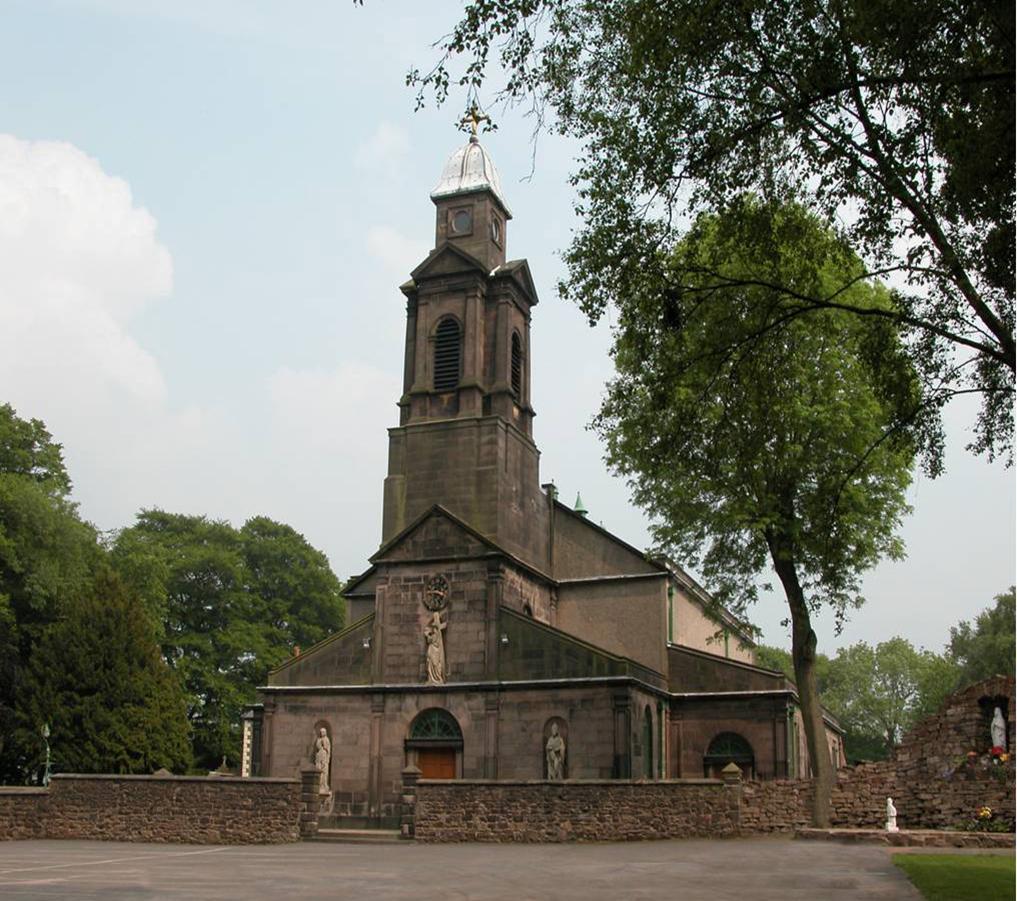History
Parish History of Weldbank
It was Fr. John Chadwick, the first priest of the parish, who opened the first mission church at Weldbank in 1774. However, before then the community of faithful Catholics who had loyally practised in extremely difficult and dangerous times of persecution, must have been served bravely by many other priests as they travelled around the area.
The story of the Catholics and their determination to worship in this part of Lancashire has been beautifully told by a local author, Tom C.Gillett. His book “The Story of Weldbank" gives a fascinating and detailed account of the remarkable growth of our parish during the first two hundred years.
Fr.John Chadwick (1728 - 1802) spent his youth at Burgh Hall, which his father owned. He attended mass in the little chapel behind the Hall. Later he went to study at Douai College, the English seminary in France. Following his ordination in 1752 he returned to Ladywell, Fernyhalgh, a mission near Preston. He was encouraged by Fr. Brockholes, his predecessor at Burgh Hall, to continue the development of that community.
The chapel at the Chadwick family home had become the centre of worship not only for the local Catholic gentry but also for their tenants and workers. When he came to stay permanently in 1770, he saw that the chapel was too small for the ever growing congregation. Thus he set about raising money for a ‘more comfortable accommodation of the Catholics of the district’ at a suitable site.
He approached Edward Weld, a wealthy landowner, who granted him the lease of the land and farm called Thurstan Hodson’s for the project. By 1774, having raised the money to alter the farm buildings suitably, Fr. Chadwick offered mass for the first time in the new Weldbank church, which was dedicated to St.Gregory the Great.
This pioneering work was all the more amazing as it was not until 1791 that the mass became legal and Catholic chapels were allowed to be built, so long as they looked like a barn and had no bell or steeple. The priest also had to take the oath of allegiance to the monarch. So for the next thirty years this simple church was the place of worship for any Catholic who walked or rode to Weldbank.
It is interesting to note that while Fr. Chadwick tended to his parish, revolutions in the American colonies and in France had clearly changed the course of world history.

Fr Chadwick died in 1802 and was buried in Standish, a founding father indeed. In his memory, mass is said for him every year on October 17th.
For the next thirty or so years, parishioners would come mainly on foot, some on horseback, and a few of the well-to-do in carriages, to the barn-cum-chapel on the top of the hill. This could not have been a pleasant journey, especially in winter when the country paths and muddy cart-tracks led to a small chapel, poorly heated with a single coal fire. Moreover, as the congregation grew many would have to stand or kneel outside in the cold.
Undoubtedly their enthusiasm for the Faith and their new parish was well sustained by the energy and personality of Fr. Richard Thompson, who succeeded Fr. Chadwick in 1802.
Trained at Douai College in France, he was sent to Weldbank by his bishop who had seen his potential as an ideal priest for a new parish ripe for development in that part of Lancashire.
Weldbank then would have had its barn-like chapel and some other farm buildings, well screened by trees surrounded by miles of open countryside. The small town of Chorley was just a short walk away down one of the hedge-lined paths.
Fr. Thompson’s arrival and early impact on the local worshippers did not go un-noticed, for the local Anglican bishop asked the rector of Chorley, “How many Papists are there? Have any persons been lately perverted? By whom? By what means?" The rector replied that Fr. Thompson’s success was founded on his weekly lecture and a publication of ‘A Summary of the Doctrines of Rome’. Significantly it was recorded that there was a school taught by a Papist in his (Anglican) parish.
Clearly Fr. Thompson had heard of the remarkable elementary school set up over fifty years before in Weldbank by Dame Hannah Edgar for the children of the parishioners. This venture became the third phase of his development plan for the parish, for he had decided to build a new and bigger church to house the ever growing congregation, and also to open a cemetery for the burial of the dead. Amazingly all three of these projects were completed in the next twenty years, an astonishing feat when one considers that the country at large was being heavily taxed to pay for the protracted Napoleonic war efforts.
Progress was not always easy. His first request to buy the land at Weldbank was refused by Thomas Weld. Other plans to obtain land also fell through. Yet in 1810 the son of Thomas Weld, another Thomas, who was later to become Cardinal Weld, gave Fr. Thompson the title to the lands on which the present church stands. Having overcome this first considerable hurdle, Fr. Thompson set about raising the funds for the new building, encouraged by a very interesting character in the Church at the time, one Fr. Barrow, who was in the habit of placing his red wig on the altar as he rushed to put on his vestments. More importantly, he supported Fr. Thompson to persevere with the building and gave a subscription of £50 to the funds.
Fr. Thompson clearly had a knack or determination to raise funds, for, in four years, the church was built and opened with the existing sanctuary and its distinctive arches.

The first St. Gregory’s Church would probably have looked like this, a common barn-like style used by many of the small religious sects which were setting up at this time
Not content with his achievement in building the church, the cemetery was opened on July 5th for the first burial, that of one ‘John Moor, barber, of Chorley’.
The first baptism and marriage at Weldbank had taken place earlier in the old chapel in 1802 and 1803.
Now he turned his energy and attention to the last of his big projects, the building of the schoolhouse on a site half-way down Weldbank Lane. Within three years it was completed, thanks to Fr. Thompson’s prodigious efforts to win subscribers from far and wide. A brief list of them shows the typical range of gifts large and small, but sufficient to raise in the next ten years the sum of £842.19s.5d. Opened in 1818, this was to be the first elementary school in the district educating the sons of gentlemen in the day school and the children of the parish on Sundays (their day of rest when they were not working in the mills or the mines!). In 1823 it was reported that 153 boys and 193 girls came to the Sunday school. Their day began with mass at ten o’clock, followed by two hours of study, then lunch, another two hours of study and finally Vespers.
During his service of forty-one years as rector, Fr. Thompson would have seen many real and positive changes locally and nationally in the influence of the Catholic Church in the lives of his parishioners. Obviously, the visible and practical presence of the church, school and cemetery was becoming increasingly recognised in Chorley and district. Its popularity could now be openly celebrated, following the Catholic Emancipation Act of 1831, which gave full citizenship to Catholics. The great progress made under the energetic and sustained leadership of this determined priest spurred on those who followed him. St. Gregory’s Weldbank was to become the base for many Catholic initiatives as the local church spread to serve the growing needs of the town’s population.
After Fr. Thompson had literally laid the foundations of the parish church of St. Gregory’s at Weldbank, it was perhaps fitting for his nephew, Father Henry Greenhalgh, to carry on the next stage in the development of the community here, and in the wider district of Chorley and beyond. The country at large was suffering hard times throughout the 1840’s. Shortages of staple foods such as corn and potatoes were causing much hardship here and in Ireland. Many Irish Catholics escaping the famine at home settled in a county sympathetic to their faith and especially in and around Weldbank. With an ever-increasing congregation, Fr. Greenhalgh found the will and the resources to continue the necessary extensions to the church buildings. He organised the completion of the side aisles and the bell and clock tower first, then the main porch. Baptistry and confessionals were added later, along with the lodge house.
Once again the tradition of using local builders with local materials was continued. Of course, such developments put the parish into debt, and even then did not satisfy the growing demand from parishioners for a second church more accessible to those who lived in Chorley town. A petition by the town’s Catholics to the Bishop gained his approval for a temporary chapel and school to be opened in 1845. In this same year, a mission was set up in a worshippers' meeting house in Leyland. The cost even then of running two schools was crippling and sadly the Weldbank day school had to close, causing difficulties for the Catholics in Weldbank, Coppull, Duxbury and Charnock Richard.
After a struggle to survive, St. Mary’s School/Chapel (a two storey building) was opened in 1852. By 1854, Father Greenhalgh, now Canon, was made Dean of Chorley Deanery which had now grown to include Leyland and Clayton Green in the North, Orrell in the South, Hindley in the East and Wrightington in the West, and which encompassed the whole of Wigan town. No doubt the Canon had a sturdy, reliable horse to enable him to visit all these communities from time to time.
His parish building was completed by the establishment of the Church of St. Joseph at Anderton in 1863. This community had also grown with the industrial revolution and the support of the Stonor Family who gave the land for building the church, school and presbytery. It is interesting to note that the family firm of Catteralls, who built St. Joseph’s Church, also presented the three statues, Our Lady, St. Gregory and Christ carrying the cross, which feature prominently at the entrance of St. Gregory’s.
The Cemetery
It is sad to reflect that at this period the cemetery at St. Gregory’s had to be constantly extended to bury the increasing numbers of those dying from unhealthy living/working conditions.
The Coming of Dean Lennon
It appears that whatever the time or need at Weldbank, there has always been the leader/father figure/benefactor to meet particular circumstances. One such priest was Dean Lennon who, from 1870 to 1897, generously devoted so much of his ability, effort and personal fortune to the development of the religious, educational and social lives of the communities in Chorley. Seeing whatever the parish required, he used his own family wealth to provide it.
The Weldbank day school was re-opened to all denominations, re-stocked and extended to provide for the increasing numbers of children. He gave several thousand pounds to the new St. Joseph’s Seminary at Upholland, built to train the priests needed for the increasing number of parishes opening throughout the Archdiocese.
Seeing the struggle of Father Barry to maintain a parish (in a tin hut) in the poorer east end of the town in 1894, Dean Lennon enabled the building of a more worthy place of worship by contributing £10,000. Sacred Heart Church was opened in 1896 and was, and remains, a memorial to his faith and generosity.
However, he was not only seen as a very generous builder of churches and schools who used his family wealth to great effect, but also as a significant figure in the everyday lives of the parishioners of Weldbank, supporting many social, commercial and business enterprises for his flock.
He took great pleasure in the interior decoration of Weldbank church and paid for the extension of the church grounds and gardens. The men of the parish enjoyed the sanctuary of a men’s club complete with bowling green. The Weldbank prize brass band benefited from his patronage and gift of new instruments. His generosity seemed to know no bounds. Wherever he saw a real need, he gave what he could. A member of the Chorley Board of Guardians, he often visited the local workhouse and did what he could to improve conditions. When Chorley needed a cottage hospital to provide treatment and relief for the suffering and the sick, he gave the land for the new building in 1894 and served on its board of management till his death.
It is understandable, therefore, that when the Dean fell ill and died in October 1897, the whole parish and town of Chorley mourned his passing reverently and with deep sorrow as a mark of respect for all his generous work and devotion to the welfare of his flock.
It now fell to Father George Teebay to follow in the giant footsteps of Dean Lennon, which he did in his own quiet, unassuming style for the next twenty-three years. During his stay at Weldbank, he supervised several projects to the interior of the church, including a new high altar and a re-modelled choir and organ loft.
In 1911 he responded to the government's demand to renew the inadequate parish school by organising a new parish school building programme which, when it opened in 1913, produced a state-of-the-art two-storey building, the best in Chorley for many years. Now large enough to accommodate three hundred and eighty-four pupils it cost £5,000, a debt which took the parish twenty years to pay off. Although these improvements were welcome, parish life during these years was overshadowed by the misery and loss of life caused by the First World War.
It is also to Father Teebay’s credit that he gave much encouragement to the fostering of a new parish in ‘poor Coppull’. He opened a school/chapel at St. Oswald’s in 1903. He was later joined in 1908 by Father Clarkson who set about establishing the new parish. His reputation as an ‘expert beggar’ was gained by his skill in organising raffles, no doubt helped by his ability to travel around the district on his new motorcycle. His efforts were rewarded when the church in Coppull was opened in 1926, with a presbytery, cemetery and parish hall soon to follow.
Back at Weldbank, Father Teebay was succeeded in 1920 by Canon Banks, who at 71 returned to a parish he had known and loved all his life. Over the next seven years he saw his parishioners through the hardships of the industrial depression and at the same time reduced some of the existing parish debts.
In 1927 it was the turn of Father Richard Bilsborrow to look to the next development. He saw that what was needed was an organisation for the men of the parish, one which could be called on to support the various schemes he had in mind. The Men’s Guild was duly formed, and working together with the ladies of the parish in many money-raising events succeeded in wiping out the debt of the new school. Dances, house parties, bachelors' tea parties and hot-pot suppers eventually enabled Father Bilsborrow to announce in 1936 that the debt was paid off. He now turned his attention to improving the sanctuary, the clock and the drive leading up to the church.
The Church
In its superb location the church has always been a local landmark, the tower being the highest point in Chorley, especially when its old cross was replaced by the present model.

The views of the countryside around Chorley from the circular windows were well worth the climb, according to witnesses.
In 1938 the Men’s Guild set about extending the club room, later to include a licensed bar. Their funds were matched pound for pound by Mr. T. H. Kevill, a local benefactor. Sadly, once again, the darkness of the war years came over the parish, so that Father Bilsborrow sought to console the families whose sons and daughters were called up to boost the country’s war efforts.
Following Canon Bilsborrow’s death in 1944, Father Cuthbert Waring led the parish in the post war years. After a distinguished academic career at Cambridge and the Catholic Teacher’s Training College in Liverpool, he raised awareness in the district to the dangers of the repression caused by the spread of communism. Weldbank became the focal point of a huge demonstration, with over one thousand men taking part in ‘The Silent March’ throughout the town, ending in a service of prayer in a packed St. Gregory’s.
Father Waring returned to Burgh Hall to celebrate the first Mass there for over one hundred and eighty years, in symbolic recognition of its unique place in the foundation of St. Gregory’s.
This summary history is taken from "The Story of Weldbank" written by Tom Gillett in 1974 for the 200th anniversary of the founding of the parish it takes the history up to that date but not beyond that date.
.png)
